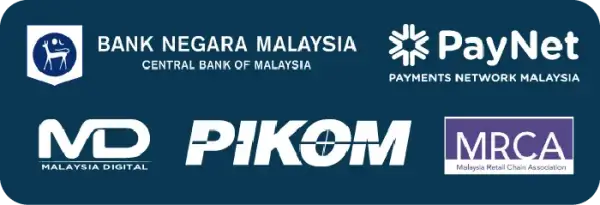
Disclaimer: This article is for informational and educational purposes only. It does not constitute financial, legal, or technical advice. References to any brands or gateways do not imply endorsement unless stated otherwise.
2025 Is A Utility Year For Malaysian Fintech
Fintech in Malaysia has moved from buzzword to business utility. Instant transfers, QR at the till, and digital onboarding are common. In 2025 the biggest shifts are structural: more digital banks competing for deposits and SMEs, Project Nexus progressing toward live cross-border instant payments (targeted 2026), the Consumer Credit Bill passing the Dewan Rakyat in 2025 ahead of a 2026 framework for BNPL and non-bank credit, and a central bank push on Open Finance and AI governance. For owners and finance leads, this is the year to simplify rails, tighten compliance, and automate reconciliation, not just try new apps.
Quick Comparison Table
| Trend | Why it matters | Cost impact | Risk/Compliance note | Time to adopt |
| Digital banks at scale | New SME products, higher-yield deposits, lower fees | Lower to moderate | Prudentially regulated by BNM | Short |
| Open Finance rollout | Easier data sharing, smoother onboarding and lending | Lower ops cost | Consent and data-sharing rules | Medium |
| QR ubiquity with DuitNow | Faster checkout, lower MDR vs cards | Lower | Follows PayNet standards | Short |
| Cross-border instant via Nexus | Cheaper, faster regional payments (go-live targeted 2026) | Lower | AML/CFT screening still applies | Medium |
| AI in finance, new governance | Better fraud and service, smarter credit ops | Mixed, saves manpower | Emerging AI rules, model risk | Medium |
| Consumer Credit framework for BNPL/non-bank credit | Fair terms, fewer disputes | Neutral | CCOB licensing & conduct rules from 2026 | Medium |
| Digital insurers and takaful (DITO) | Embedded, usage-based cover | Neutral to lower | New digital insurer regime | Medium |
| Regulated crypto and digital assets | New payment and investment rails | Depends on use case | SC-licensed exchanges only | Medium |
| ISO 20022 richer payment data | Easier reconciliation, fewer errors | Lower over time | SWIFT migration milestones | Medium |
| Revised e-KYC, broader scope | Faster onboarding, lower fraud | Lower | Follow BNM e-KYC policy | Short |
1) Digital Banks Reach Scale And Sharpen Competition
- Malaysia’s five licensed digital banks are now live and scaling, bringing fresh price points and UX into daily banking, SME deposits, and micro-lending.
- Expect more segment-specific offers, event-driven savings, and fee-lite packages as players chase share.
- This intensifies pressure on incumbents to improve mobile experiences and SME credit. Fintech media track the live roster and launches, including the first Islamic digital bank.
Price-check your business accounts and SME financing against at least one digital bank. Pilot a small float or term deposit to test service and API access.
2) Open Finance moves from concept to implementation
- BNM has signalled Open Finance as a near-term priority in 2025, with an exposure draft and phased rollout enabling consent-based data sharing between banks, participants, and third parties.
- For businesses, this means less PDF chasing, faster account verification, and smarter credit decisions that use live bank data.
Map which finance workflows still rely on screenshots and emailed statements. Line up vendors that support consented data pulls, and prepare internal data-handling policies.
3) QR payments and DuitNow hit ubiquity
- DuitNow QR acceptance reached roughly 2.6 million points by end-2024. Volumes and values continued to surge into 2025 as merchants preferred lower-cost acceptance and consumers leaned on familiar flows.
- For SMEs, QR is the default, with instant settlement and lower acceptance costs than typical card rails.
If you still rely on manual bank transfers or cash handling, add DuitNow QR at every touchpoint and link it to automated reconciliation in your accounting system.
4) Cross-border instant payments via Project Nexus
- Project Nexus connects national instant payment systems.
- The blueprint is complete and an operator entity was formed in Singapore in 2025; participating central banks are working toward first live corridors targeted for 2026.
- Once live, expect lower costs and better transparency in remittances and B2B.
Audit your cross-border flows. Where partners support Nexus corridors once live, shift eligible invoices and remittances off wire to instant, then renegotiate bank fees.
5) AI Becomes Practical, And Governance Arrives
- BNM released a 2025 discussion paper on AI in the financial sector that outlines benefits and model-risk expectations.
- Industry groups responded with governance frameworks. Banks and insurers report rising AI use in fraud detection, service chat, and risk review, while remaining cautious on generative AI in production.
Start with supervised AI that has measurable lift, such as fraud scoring and support triage. Document model governance and human-in-the-loop checks now to avoid future rework.
6) BNPL And Non-Bank Credit Move Under A Single Framework
- The Consumer Credit Bill 2025 passed the Dewan Rakyat in July 2025 and is proceeding through remaining steps toward a 2026 framework.
- It will create a centralised regime covering BNPL, leasing, factoring, and other non-bank credit with the Consumer Credit Oversight Board involved in supervision.
- Expect clearer licensing, conduct, and affordability checks.
If you offer BNPL at checkout or extend trade credit, review onboarding flows, disclosures, and collections to align with the forthcoming Consumer Credit framework.
7) Digital Insurers And Takaful Operators Get A Dedicated Regime
- BNM issued the policy for Digital Insurers and Takaful Operators (DITO). Expect usage-based coverage, embedded insurance in e-commerce, and faster claims through data and automation.
- This is particularly relevant for logistics, mobility, and gig-economy businesses that need flexible coverage.
Explore embedded micro-covers for delivery fleets or devices, and integrate claims data with your ERP to reduce downtime.
8) Crypto Within The Guardrails Of Licensed Markets
- Digital asset activity sits under the Securities Commission’s recognised markets framework.
- Only approved exchanges may operate, and the SC lists which tokens are tradeable, including their Shariah status.
- The regulated perimeter supports treasury, payroll experiments, or loyalty programmes with risk controls.
If you are exploring stablecoins or tokenised rewards, restrict activity to SC-registered venues and document accounting and tax treatments before launch.
9) ISO 20022 Migration Enriches Payment Data
- Global migration to ISO 20022 continues through 2025 into 2026. Richer, structured remittance fields improve matching and reconciliation, reduce manual work, and strengthen compliance screenings.
- Malaysian institutions report steady progress in central bank updates.
Ask your bank and gateway when they will expose full ISO 20022 fields to you. Update invoice and ERP templates to capture and pass structured data end-to-end.
10) E-KYC Gets Stricter And Broader
- BNM’s revised e-KYC policy strengthens standards for both individuals and legal entities.
- This enables faster remote onboarding for SMEs and contractors, while tightening fraud prevention.
- Vendors must meet higher assurance and audit expectations.
Re-certify your e-KYC provider against the 2024 policy. Expand e-KYC beyond customers to suppliers and gig workers to cut paperwork and fraud.
How We Selected These Ten Trends
- Regulatory momentum: Clear 2024–2025 milestones, such as DITO, e-KYC, Open Finance signals, the Consumer Credit Bill’s 2025 passage in the Dewan Rakyat, and ISO 20022 plans.
- Adoption at scale: Documented QR and instant-payment growth, plus live digital banks.
- Business impact: Trends that reduce cost of acceptance, speed settlement, open financing access, or lower compliance overheads.
- Evidence base: Anchored to BNM, SC, BIS, PayNet, and credible market summaries.
What Malaysian Businesses Should Do Next
- Modernise your rails. Deploy DuitNow QR at all points of sale and switch eligible cross-border flows to instant corridors when they go live. Savings and speed compound.
- Rationalise your banking mix. Test at least one digital bank for SME deposits or working capital and compare fees, APIs, and service metrics.
- Prepare for Open Finance. Map data-sharing use cases now and update privacy notices and consent capture.
- Tighten onboarding and collections. Align e-KYC processes with the 2024 policy and get BNPL/trade credit workflows ready for the forthcoming Consumer Credit framework.
- Adopt AI with controls. Start with fraud and service triage, maintain model documentation, and set thresholds for human review.
- Exploit richer payment data. Ask providers for ISO 20022 fields and automate reconciliation to cut month-end close time.
- Right-size insurance. Pilot digital or embedded cover for logistics and device fleets to reduce per-unit cost and claims latency.
- Stay within crypto guardrails. Use only SC-registered exchanges, and document policy on treasury and rewards.
A Pragmatic Year To Simplify, Not Just Experiment
Malaysia’s 2025 fintech story is about plumbing and policy working together. Instant rails move toward regional launch, digital banks deepen competition, BNPL is moving under a single law as the Consumer Credit framework is finalised for 2026, and the groundwork for consented data sharing and AI governance is laid. Businesses that standardise on QR and instant payments, clean up data flows for Open Finance, and automate onboarding will feel the benefit in cash flow, operating cost, and audit readiness. The risk is not moving at all when the rails around you already have. In order to weather these risks, it’s vital to have a trustworthy payment solutions partner, one that helps you navigate these ever-changing circumstances while minimizing risk.
Frequently Asked Questions About Fintech Trends in Malaysia
What is the easiest fintech win for a small retailer this year?
Enable DuitNow QR at every touchpoint and connect it to your accounting software for automatic reconciliation.
Are digital banks safe for business deposits?
They are licensed and supervised by BNM. As with any bank, diversify across institutions and check deposit protection limits.
Will Open Finance expose my customers’ data?
No. Open Finance is consent-based. You must obtain and record customer permission and handle data according to policy.
How does the Consumer Credit framework affect BNPL at checkout?
The Consumer Credit Bill passed the Dewan Rakyat in 2025 and is moving toward a 2026 framework. Expect clearer disclosures, standardised fees, and better dispute handling once the regime takes effect.
Should SMEs adopt crypto payments now?
Only through SC-registered providers and with clear accounting policies. For many SMEs, instant domestic rails and QR already cover most needs.
What is ISO 20022 and why is it important for you?
It standardises rich payment data. You get cleaner references and faster matching, which shortens month-end close.
Our Partners :





Paydibs is a leading payment solutions provider committed to simplifying transactions for businesses of all sizes.

